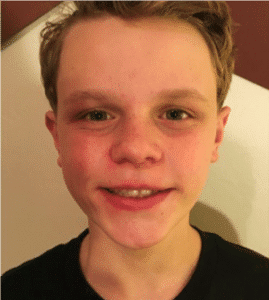
Another tragic news story this morning; Anthony Bourdain committed suicide in his France hotel room. Chef, author, and host of the wildly successful series “Parts Unknown,” 61-year-old Bourdain seemed to have the dream life to the rest of us. This news after famous 55-year-old designer, Kate Spade, was pronounced dead by suicide Tuesday. She left behind a 13-year-old daughter. Devastating. So many speculations about depression and marital conflict. We are all asking, why? How could this be?
It’s not just celebrities that struggle with emotional overwhelm. Too often parents in my practice sit on the edge of my couch terrified that their child’s social media post about wanting to “go dark” and their announcement that they have the lamest parents ever is the red flag that they could lose him to suicide. Teens tell me how burdened they are with worry about their friends who are cutting, using drugs, and talking of suicide. They keep their confidence and listen; all the while caught in terror that telling an adult will violate the loyalty code but not telling may result in a more tragic consequence. Those who are suicidal leak their pain out bit by bit, desperately grasping for a moment of contentment and calm. Suicide rates are up by 25%, yet we aren’t clear what factors support this devastating trend.
Although many suicidal people are depressed or addicted to drugs or alcohol, many are not. The one thing suicide completers have in common is a perfect storm of events that culminate in five minutes of the courage it needs to escape their current situation. For those who are suffering from terminal illness, chronic pain, addiction spirals, mental illness, and/or horrific life circumstances, we can kind of understand that logic. After all, who hasn’t dreamed of a moment of relief when mired with emotional or physical pain?
Those Left Behind
What we don’t understand, and in many circumstances can’t forgive, is how can the suicidal burden friends and family with such devastating feelings of confusion and loss. When one loses a loved one to suicide, they are left ruminating over what they missed, how they might have intervened. They grieve, and they rage. They become trapped in that vicious cycle of fear and confusion similar to the suicide victim, usually for far longer than the suicide victim contemplated their plan. With postmortem analysis, there’s no opportunity to discover all the pieces of the puzzle or intervene for recovery. The decision to give up has been made for them, usually without sufficient explanation or warning. If one didn’t know better, it would seem suicide is a violently hostile behavior aimed at all those who love.
We must know better, for the sake of Asia Argento, Andy Spade, and Frances Beatrix Spade. And please, please, please don’t judge or shame the victims left behind. I’m disgusted with online comments blaming parents and spouses. They are suffering so much already. They need our love and compassionate support more than ever.
The truth is, most suicidal individuals I have worked with explain after recovery that they simply couldn’t generate any other alternative to escape their overwhelming feelings of hopelessness. That in the midst of it all, they were simply numb to possibilities. This brings me to three important points when dealing with suicidal ideation.

Take the Time
First, to recover from life crisis, one must be prepared to take the time to process powerful feelings with the intent of working through them. That means recognizing that in the phase of emotional numbing or overwhelm, parts of the brain are actually offline. They are not available to fill in the overall picture of understanding and insight. Often it takes time to sketch in the emotional factors necessary for insight and emotional mastery. As our brain and feelings come online again, we will feel a range of sometimes baffling emotions. For some that is experienced as a slow drip, while for others it will be a firehose. For most, those feelings wax and wane based on situational cues, resulting in a rollercoaster of experience. Painful and sometimes seemingly impossible, tolerating the leaning in is necessary for the stretching of the soul that is wisdom.
To support those struggling to lean in, help them establish peaceful moments for honest, investigative discovery. These moments of authentic insight weave into profound wisdom over time that becomes the tapestry of who we really are. Coming out of a crisis with a more integrated and thorough understanding of oneself and others is called post-traumatic growth. Sometimes it is at times of extreme pain that one becomes capable of understanding the precious elements of life. The key is to lean in and patiently recognize that recovery is imminent.
Encourage Active Problem Solving
Second, work to achieve recovery by actively problem solving and making an activity schedule (take a walk, shower, eat breakfast, visit a friend, make a meal, listen to rejuvenating music, write in your journal or engage in some type of creativity). Psychology researchers have identified active problem solving as an important contributor to recovery. Active problem solving is the ability to generate and implement discrete steps to make the situation better. In contrast with passive problem solving, or relying on others or fate or luck to fix things, active problem solving can pull in just enough hope to get help or find reasons and ways to stay living until things get better.
Agreeing to Silent Witness May be Emotional Abuse
The final point I’d like to offer is how to provide the best support to a friend or loved one in pain. Too often young people in my practice shoulder the devastating burden of the emotional chaos that their friends express in private online disclosures. To seek help is a breach of trust and loyalty. But to endure the pain with the friend can wear one down to the point where they too are depleted of passion, hope, and joy. Is the solution to tell adults for help and risk angering the friend who seems incapable of tolerating yet another disappointment?
The answer is, absolutely. Every day I teach clients that being there for those we love is the fuel of intimacy. However, when one crosses the line to self threat, either with self harm, drug abuse, or suicidal threats, private disclosure can become emotional abuse. When friends fish for support with threat and then demand secrecy, they are burdening others in a helpless shackle of emotional violence. Unloading pain on a loved one without taking steps for recovery traps them as a devastated and impotent audience to destruction. That is not friendship.
If you or somebody you love is struggling with emotional overwhelm, numb hopelessness, or an inability to actively problem solve, take these steps for relief:
-
Reach out for professional help.
-
Recognize that these feelings are temporary. The permanent solution of suicide is too devastating to all of those who love you to be a reasonable option.
-
Give yourself the occasional self-compassionate, quiet time it takes to gently process your feelings as you engage in the routines and rituals of everyday life.
-
Avoid alcohol (a depressant).
-
Seek restorative sleep, exercise, and clean, delicious food.
-
Postpone big decisions.
-
Allow your friends the privilege of support and surround yourself with pleasant memories and precious future plans.
-
If you are witness to self-harm threats, whether this is your loved one, your friend, or your child’s friend, notify the person’s loved ones or reach out for professional help. Silently shouldering your knowledge is missing opportunity for potentially life-saving intervention.
Life is a difficult journey, but it is worth the fight of living it well. When in doubt, always err in the direction of compassion. What do you think? To read more about the components of suicide risk, check out my 2014 article The Death of Robin Williams: Suicidal Impulse, the Media, and Your Obligation As a Compassionate Citizen of the Planet.
National Suicide Prevention Hotline: 1-800-273-8255
Live & online chat available 24 hours/day
I’m the mom psychologist who will help you GetKidsInternetSafe.
Onward to More Awesome Parenting,
Tracy S. Bennett, Ph.D.
Mom, Clinical Psychologist, CSUCI Adjunct Faculty
GetKidsInternetSafe.com
Photo Credits
Photo by Ian Espinosa on Unsplash




